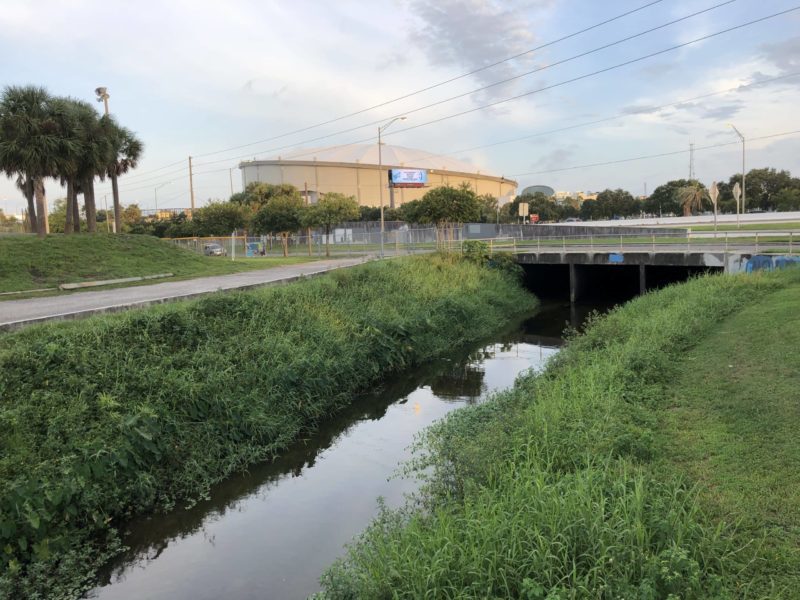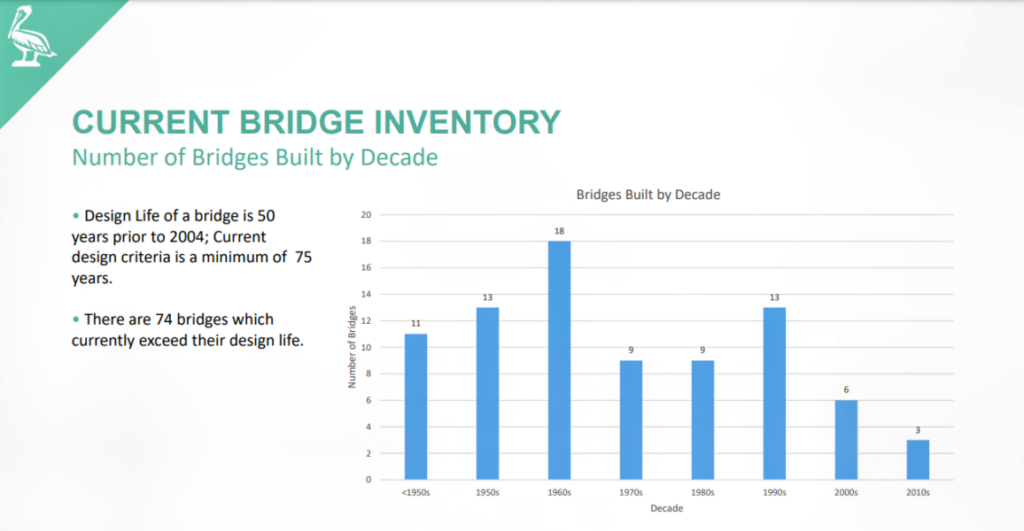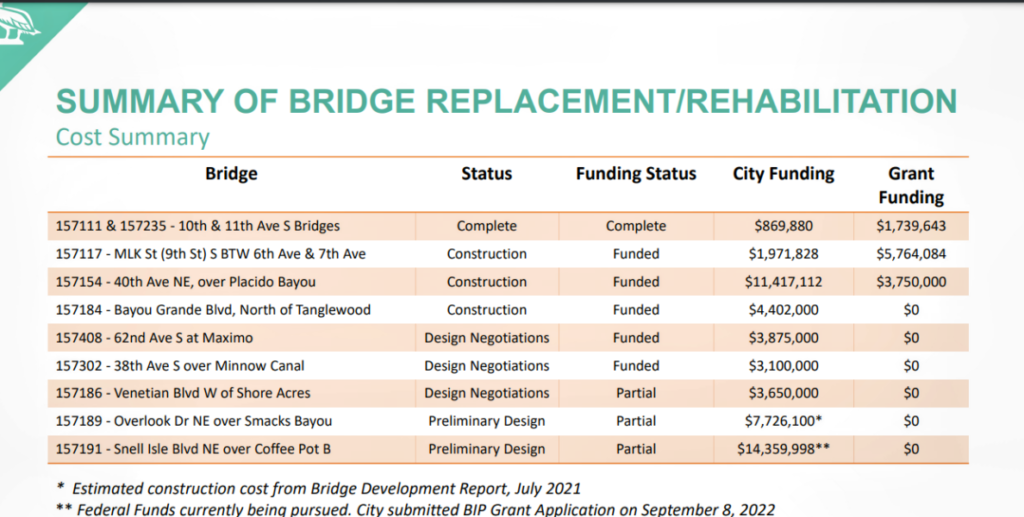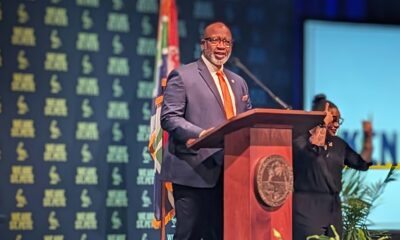Thrive
City documents: 74 bridges exceed design lifespan

As a peninsula surrounded by salt water, St. Petersburg has a preponderance of bridges in need of constant maintenance, repair and occasionally, replacement – all of which require substantial funding.
During Thursday’s Public Services and Infrastructure meeting, the engineering and capital improvements department updated city council members on current and future bridge projects. Officials also discussed the increasing amount of money needed to ensure safety.
According to accompanying city documents, 74 of St. Petersburg’s 138 total bridges have exceeded the recommended design life. Of those, seven require “major rehabilitation or replacement.”
“In my city council district, there are five bridges that need a lot of attention or replacement,” said Councilmember Ed Montanari, committee chair. “This is also a critical infrastructure piece for our city.”
The design life for bridges built before 2004 is 50 years, while current criteria allow for a 75-year window. The Federal Highway Administration (FHA) defines a qualifying bridge as a structure erected over a depression or obstruction with an opening measured along the center of the roadway of over 20 feet.
Marshall Hampton, senior professional engineer, began the presentation. He called the design life period “a best guess.”
“Through proper maintenance and putting money in the right places at the right time, you can make sure your bridges last longer,” he added. “Typically for the state … I think it was 88 years they were getting out of their bridges that were replaced mainly for capacity issues, more so than condition.”

A graphic showing when the city built its bridges. Screengrab.
Hampton said the city’s structures align with that length – except for the 40th Ave NE bridge over Placido Bayou. He said that “was a different discussion.” The new bridge is under construction.
According to the documents, St. Petersburg features 72 vehicular-qualifying bridges, 10 vehicular non-qualifying and 56 pedestrian crossings. The city built 42 bridges before the 1970s, with 18 coming in the ‘60s alone. A federally mandated inspection program began in 1971.
The last time the city council received an update on the structures was in 2017, said Brejesh Prayman, engineering director, and “a lot has changed.”
Hampton explained that the Florida Department of Transportation conducts biannual inspections of vehicular qualifying bridges. The city follows the same schedule for the non-qualifying structures, such as those surrounding Tropicana Field.
“Something we consider pedestrian bridges – we are in the process of developing a program to get them inspected,” said Hampton.
He said officials are now taking a proactive approach to maintaining its bridges. The engineering team, added Hampton, has enough experience and confidence to know what they should prioritize and the ability to get the most out of available funding – including state and federal grants.
City documents state that 10 local bridges are “structurally deficient,” and FDOT policy requires that municipalities replace those within six years of that designation. Another slide stressed that “structurally deficient does not necessarily mean unsafe.”

A graphic showing current and future bridge projects. Screengrab.
The city’s bridges are flat and short in length, said Hampton, which benefits engineering efforts. However, funding remains an issue, he said, which increases the need to regularly conduct preservation measures that prevent minor repairs from becoming significant problems.
“It’s tens of thousands of dollars compared to hundreds, to a million dollars, said Hampton. “So, it’s all timely and making sure you know what your priorities are, as well as having the funding available.”
Transportation Director Evan Morey explained that money needed to maintain and replace bridges – which ultimately stems from the city’s Penny for Pinellas Round 4 funding – has significantly increased. Not only has the cost of construction materials soared in recent years, but St. Petersburg is also competing with large state projects.
Morey said his team is “really pushing the envelope” with the city council and administration to triple the allocated funding. He relayed that a 2017 analysis showed they needed $9 million annually, which has increased to $12.6 million “to keep up with the bridges that are falling out of service life.” Morey said the department typically receives $3.5 million from Penny funding.
“This is a big issue in a big city that has 82 (vehicular) bridges,” said Montanari. “It’s a big capital expense, and we are underfunding this capital expense.”
Montanari noted city officials are concluding the FY23 budget and will begin the process anew in January. He expressed his desire to discuss funding sources and options further ahead of the FY24 budget.







